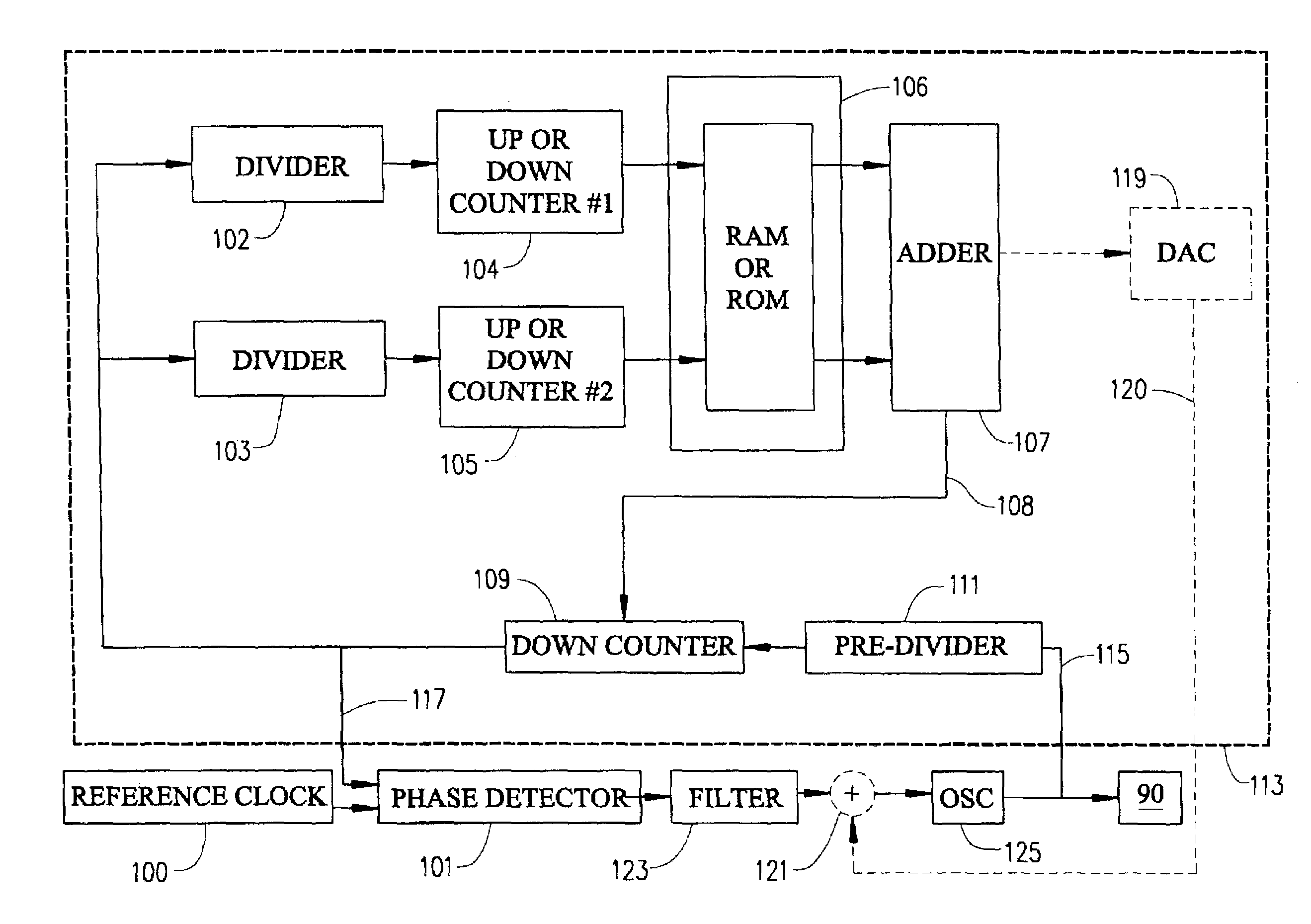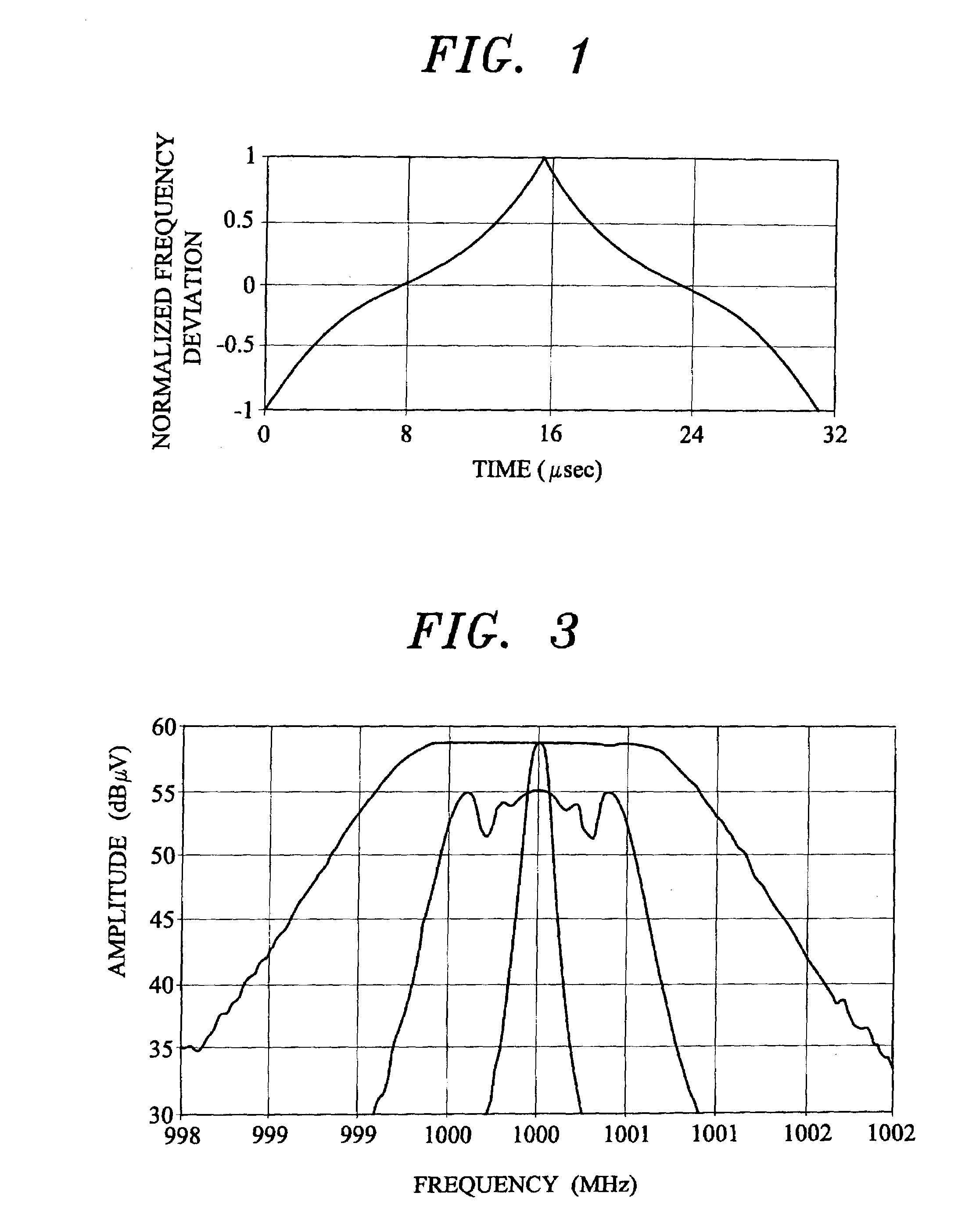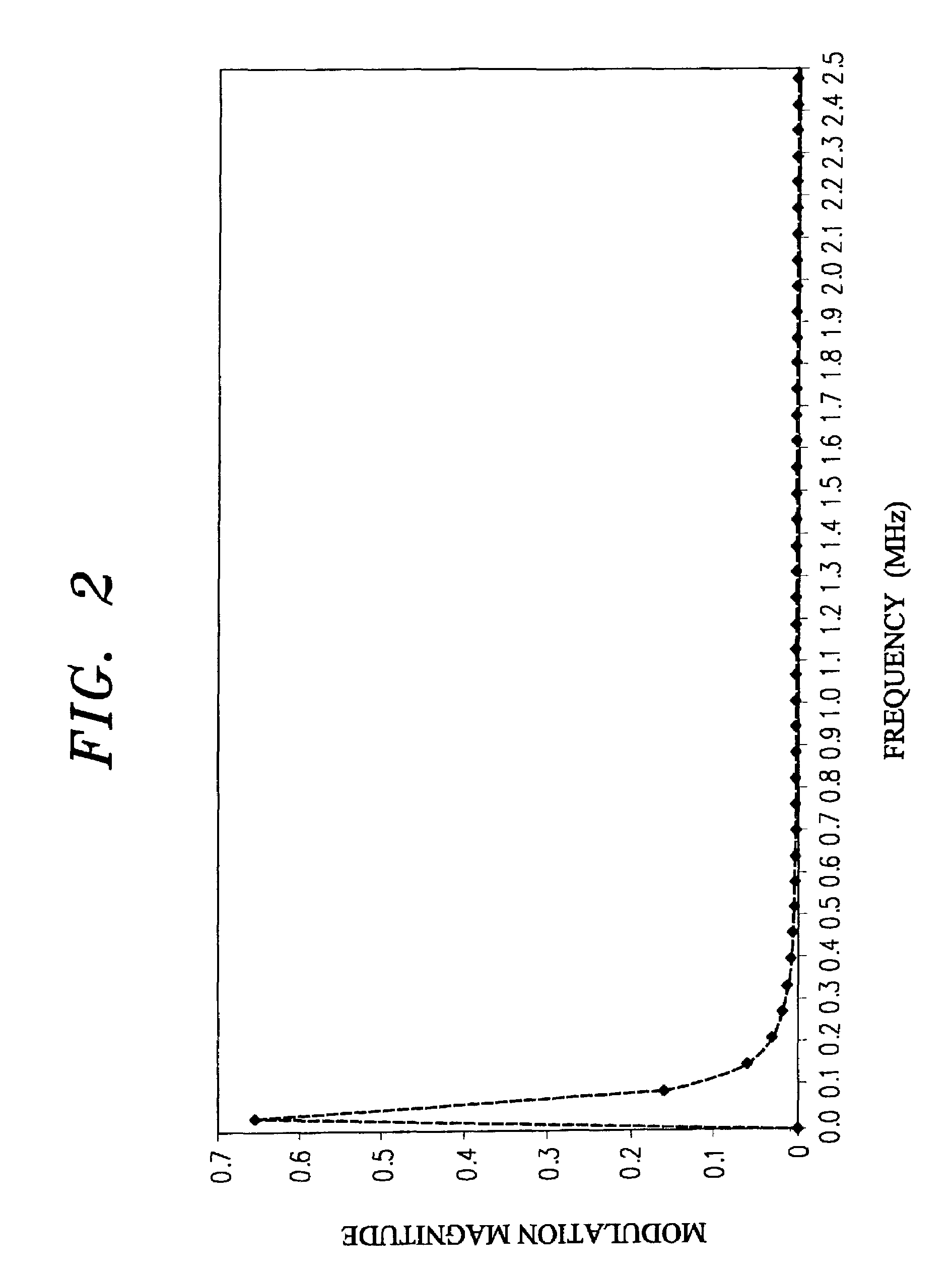High frequency spread spectrum clock generation
- Summary
- Abstract
- Description
- Claims
- Application Information
AI Technical Summary
Benefits of technology
Problems solved by technology
Method used
Image
Examples
Example
TEST EXAMPLE 1
A 1 GHz clock was modulated under standard EMI reduction conditions as follows:
[0030]Modulation frequency—31.25 kHz.
[0031]Preferred profile (introduced in the foregoing U.S. Pat. No. 5,488,627, this profile is convex at frequencies lower that the nominal and concave at frequencies higher than the nominal, thereby forming an abrupt transition or cusp at the outer frequencies). (Although preferred, this invention is believed applicable to any operative profile.)[0032]Deviation—±300 kHz (±0.03%)[0033]Bandwidth of measurement—120 kHz. and 1 MHz.
[0034]The results are shown in FIG. 3. Without modulation the clock of the foregoing had a measured amplitude of 58.89 dBμV (central curve). After modulation of the foregoing at measurement bandwidth of 120 kHz the highest point in the spread spectrum harmonic measured 55.25 dBμV for 3.64 attenuation (middle curve). After modulation of the foregoing at measurement bandwidth of 1 MHz the resulting attenuation was 0 dB since the sprea...
Example
TEST EXAMPLE 2
[0035]The foregoing Test Example 1 was modified by increasing the deviation alone by 8.33 times for a deviation of ±2.5 MHz (±0.25%). The results are shown in FIG. 4. The resulting measurement of the modulated clock was 58.76 dBuV (wide curve). The unmodulated clock measured 59 dBμV (central curve). (The tiny variation from the previous measurement was due to the time between measurements.) This gives a negligible attenuation of only 0.24 dB.
[0036]In order to achieve greater attenuation, a much wider deviation would need to be used.
Operative Example
[0037]The foregoing Test Example 2 was modified by increasing the modulation frequency by 8.33 times as follows:[0038]Clock nominal (center) frequency—1 GHz.[0039]Modulation frequency—260 kHz.[0040]Profile (as foregoing Test Examples).[0041]Deviation—±2.5 MHz (±0.25%).[0042]Bandwidth of measurement—1 MHz.
[0043]The results are shown in FIG. 5. The unmodulated clock measured 58.76 dBμV (central curve) and the modulated clock m...
Example
[0048]A third embodiment is applicable to clock frequencies higher than those common currently, but less than 1 GHz. In the near future it can be expected that such clock frequencies, such as 500 MHz, will be used commercially in common devices such as printers. Such clocks will have very significant harmonics above 1 GHz.
[0049]This embodiment introduces the increased deviation and fast modulation described in the foregoing as a component of the standard modulation to the clock operating below 1 GHz creating a dual modulation profile. FIG. 1 shows the current typical 32 kHz operating in the preferred profile discussed in the foregoing. FIG. 6 shows the high frequency profile to be added to standard modulation. FIG. 8 shows the combined profile.
[0050]The combined profile may be described mathematically as follows:
c(t)=A(t)×M1(ω×t)+B(t)×M2(k×ω×t+φ)
Where: x denotes multiplication,[0051]A is a factor defining the frequency deviation of the slower profile,[0052]B is a factor defining the...
PUM
 Login to View More
Login to View More Abstract
Description
Claims
Application Information
 Login to View More
Login to View More - R&D
- Intellectual Property
- Life Sciences
- Materials
- Tech Scout
- Unparalleled Data Quality
- Higher Quality Content
- 60% Fewer Hallucinations
Browse by: Latest US Patents, China's latest patents, Technical Efficacy Thesaurus, Application Domain, Technology Topic, Popular Technical Reports.
© 2025 PatSnap. All rights reserved.Legal|Privacy policy|Modern Slavery Act Transparency Statement|Sitemap|About US| Contact US: help@patsnap.com



